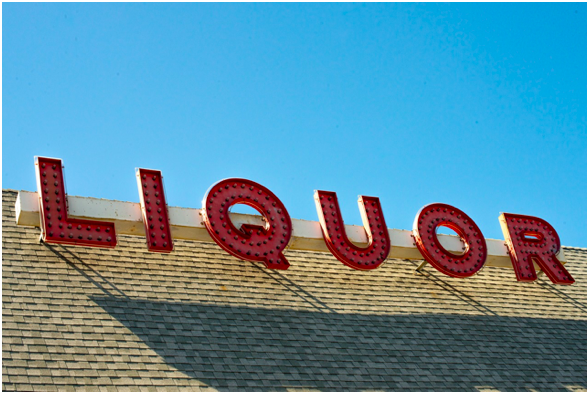Business
5 Tech Tools Every Liquor Store Should Have

Technological advancements have seen retail stores rely more on technology for various operations and needing more from their point of sale (POS) systems. Liquor stores need tech solutions to operate efficiently, keep track of inventory, give customers a fast and safe experience, and boost sales. Tech also helps to improve decision-making at the executive level. Here are the top five tech tools that every liquor should have.
1. ID scanner
Liquor stores sell highly regulated products, with the laws being stringent on the age of persons allowed to shop there. An ID scanner makes it easier to ascertain whether one has reached 21 years of age, which is the minimum legal drinking age. You can scan and authenticate passports, visas, ID cards, or drivers’ licenses in a fast, secure, and accurate way.
2. Inventory and back-office management integration
Store managers no longer need to catalog every product in the liquor store manually. There is the option of acquiring a POS system that integrates the store’s technology and back-office processes for fast and efficient operations management.
A well-designed liquor store POS system should process orders, organize inventory, and accept payments. The system should also integrate with your back office tech solutions, letting you run aspects like employee scheduling and vendor management.
3. E-Commerce and delivery apps
E-commerce platforms and delivery services in these pandemic times have revolutionized the liquor industry. With the number of walk-ins now limited, online orders and delivery services have enabled businesses to expand their reach, maintain and increase their sales levels. Customers simply log into the app or website, make an order, and make an online payment right from the comfort of their homes.
These liquor store tech tools have also greatly helped the store staff remain employed. Instead of getting laid off due to the low number of walk-ins, they can be deployed to the delivery department.
4. Payment processing options
As technology in the retail space continues to develop, new payment options available have emerged too. Customers are no longer restricted to just credit and debit card options. It is now possible to make payment for your liquor orders entirely online using smart wallets, wearable tech, and other third-party payment solutions.
When your POS system integrates different payment options, you offer your customers flexibility, allowing them to pay using their most preferable means. You will not only improve the customer experience but also make some valuable liquor sales too.
5. A gift card or loyalty solutions
Wines and liquors make the perfect gift solutions for friends and family. When you have gift cards for your liquor store, your customers can gift others without going through the trouble of guessing what the recipient would enjoy. Gift your loyal customer too through a loyalty and coupons program, which they can redeem and use on their products of choice in the store.
The ideal POS system should seamlessly integrate gift, loyalty, and coupons programs to cultivate long-term customer relationships and loyalty for business success.
Endnote
Technology is part and parcel of every sector, and as new technologies keep being invented, the customers’ expectations of their shopping experience keep rising as well. To remain competitive, your liquor store just has to keep up with these rapid tech changes. Invest in future-oriented technology that personalizes your business processes and leaves the customer impressed.
Business
Remote Professionals Getting More Value for Their Work Thanks to Borderless Banking

Not too long ago, the idea of working remotely from an island in Thailand or a co-working space in Berlin sounded like the kind of fantasy only tech moguls or backpacking freelancers could afford.
Fast forward to today, and it’s as good as a global reality. Millions of professionals have cut the cord from traditional office life in exchange for flexibility, freedom, and a work-life balance that fits their personal rhythm and not their employer’s timezone.
However, as remote work has reshaped how people earn a living, it’s also pointed out the existing limits to most of the world’s financial systems. Traditional banking simply wasn’t built for a workforce that’s always on the move, operating in multiple currencies, and getting paid across borders.
Thankfully, that’s where borderless banking like Black Banx have proven vital, and has quietly transformed the way money is managed for people vacationing and working overseas alike.
The Rise of the Remote Work Economy
Remote work isn’t just a pandemic-era trend that faded with Zoom fatigue—it’s become a defining feature of the modern workforce. A recent survey revealed that over 39% of Gen Z and Millennials planned to live and work abroad for extended periods this year, many staying six months or more in a single location. That’s beyond a short trip, and can be considered as good as a sabbatical with a substantial lifestyle shift.
According to recent estimates, the digital nomad economy now also contributes as much as US$787 billion annually to the global economy. And this isn’t just entry-level gig work. A third of digital nomads earn between US$100,000 and US$250,000, while another third take in US$50,000 to US$100,000 annually.
It is indeed evident that the manner in which many make a living has changed. Unfortunately, most financial systems haven’t kept up.
Where Traditional Banks Are Still Falling Short
For those who have ever tried to open a bank account abroad or receive payment from a foreign client, they already know the drill: the paperwork is endless, delays are frustrating, and the fees? So much to do, even for the smallest amounts of money.
Just to name few of the hurdles remote workers still face with conventional banking:
- Account setup restrictions: Need proof of residence, tax IDs, or a local job offer—things many digital nomads simply don’t have.
- Slow international transfers: Payments can take days to process, which is a nightmare when rent’s due.
- High foreign exchange fees: Currency conversions often come with steep, hidden costs.
- Limited multi-currency support: Most banks still force users to operate in a single currency, making financial planning chaotic at best.
And perhaps most tellingly, many banks have digitized their operations but haven’t personalized their services. According to Accenture’s 2025 Banking Trends Report, while digital transformation has improved efficiency, it often sacrifices the customer experience. That’s not great news for people who live outside the lines.
Borderless Banking for Professionals Across the Globe
The concept of borderless banking goes far beyond wiring money internationally. Fundamentally, it’s also about being able to eliminate the friction between people and their money, no matter where they are in the world, and maintaining an ecosystem where geography, bureaucracy, and currency don’t stand in the way of financial freedom.
A working example of this is Black Banx, a Toronto-based fintech founded by German billionaire Michael Gastauer. Since launching globally in 2015, it has grown to serve over 78 million clients in 180+ countries as of Q1 2025, proof that people take to digital banking solutions when it is accessible, affordable, and is useful in just about any locale.
In the first three months of this year, Black Banx had also earned US$4.3 billion in revenue and US$1.6 billion in pre-tax profit, more than double from the same quarter the previous year and showing it has consistently delivered tangible value to global customers—remote professionals included
How Borderless Banking Maximizes Value for Remote Workers
1. Instant Account Access—No Strings Attached
The times of hunting down local branches or collecting endless documents just to open an account are finished. With borderless banks, users can open an account in minutes using just a photo ID—no proof of address or income required. That’s a lifesaver for anyone living outside their passport country or hopping from one location to another.
2. Multi-Currency Mastery
Managing money in multiple currencies used to mean juggling several accounts—or worse, losing money on conversions. Borderless platforms like Black Banx support 28 FIAT currencies and allow real-time currency conversions at competitive rates. That means remote workers can:
- Invoice clients in one currency
- Spend or save in another
- Hedge against local currency fluctuations
- Avoid excessive conversion fees altogether
3. Seamless, Real-Time Global Payments
Getting paid late, or paying others late, isn’t just inconvenient; it can damage relationships and disrupt your cash flow. With real-time payment support, remote workers can receive funds instantly, no matter where their clients are. This is particularly valuable for freelancers and entrepreneurs juggling multiple contracts across time zones.
Plus, bulk payment features and API integration streamline processes for those running teams or businesses.
4. Built-In Crypto Options
It isn’t surprising that many digital nomads are already deep into crypto. Whether it’s for investment, faster transactions, or avoiding traditional finance red tape, crypto is becoming essential.
Since 2016, Black Banx has allowed users to send, receive, and convert crypto (like BTC and ETH) within their accounts. That integration saves users from having to manage separate crypto wallets, and adds another layer of flexibility to their financial toolkit.
5. Secure Transactions
Remote workers often log in to work from cafés, coworking spaces, and airports, to name a few. Of course, this flexibility of being able to work almost anywhere should never come at the cost of security. Borderless banks like Black Banx use end-to-end encryption, AI fraud detection, and two-factor authentication to keep accounts safe from risky elements.
Financial Freedom, Not Just Convenience
Perhaps the most overlooked benefit of borderless banking is the freedom it provides. Not just to access money, but to fully participate in the global economy. For millions of professionals in underbanked regions like Africa, Latin America, Southeast Asia, borderless banking has become a gateway to financial inclusion and a way to take on opportunities that typically wouldn’t be available to them if not remote.
By removing barriers to entry, platforms like Black Banx empower underserved individuals to both take control of their finances and increase their earning power by working with companies from higher paying markets. This democratization of finance isn’t just good for individuals, it’s good for the global economy as a whole.
As Black Banx CEO Michael Gastauer put it: “Our multi-currency solutions enable businesses to tap into global talent without worrying about payment complexities. We make cross-border transactions as seamless as local ones.”
The Road Ahead
By 2030, the number of digital nomads worldwide is expected to soar past 60 million, according to the Forbes Technology Council. That means tens of millions of workers will be navigating foreign currencies, time zones, and financial systems—all while expecting the same seamless experience they’d get at home.
Indeed, remote professionals aren’t just looking for places to work—they’re looking for systems that work for them. In a lifestyle built on flexibility, traditional banking is proving too rigid, too slow, and too expensive.
Borderless banking services like those offered by the likes of Black Banx, on the other hand, offer exactly what today’s global workforce needs: instant access, multi-currency support, real-time payments, crypto integration, and enterprise-level security—all in a streamlined experience.
-

 Tech4 years ago
Tech4 years agoEffuel Reviews (2021) – Effuel ECO OBD2 Saves Fuel, and Reduce Gas Cost? Effuel Customer Reviews
-

 Tech6 years ago
Tech6 years agoBosch Power Tools India Launches ‘Cordless Matlab Bosch’ Campaign to Demonstrate the Power of Cordless
-

 Lifestyle6 years ago
Lifestyle6 years agoCatholic Cases App brings Church’s Moral Teachings to Androids and iPhones
-

 Lifestyle4 years ago
Lifestyle4 years agoEast Side Hype x Billionaire Boys Club. Hottest New Streetwear Releases in Utah.
-

 Tech7 years ago
Tech7 years agoCloud Buyers & Investors to Profit in the Future
-

 Lifestyle5 years ago
Lifestyle5 years agoThe Midas of Cosmetic Dermatology: Dr. Simon Ourian
-

 Health6 years ago
Health6 years agoCBDistillery Review: Is it a scam?
-

 Entertainment6 years ago
Entertainment6 years agoAvengers Endgame now Available on 123Movies for Download & Streaming for Free
